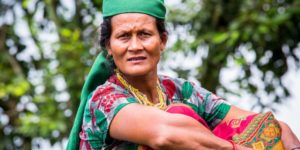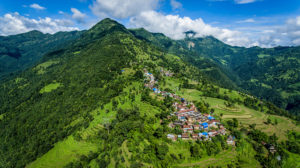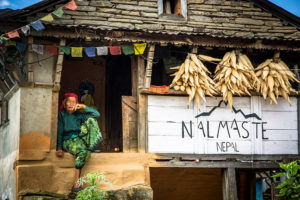
A new reader launched on Sept. 21 brings together 30 years of scholarship on a topic that is gaining increasing attention worldwide: gender and forestry.
The Earthscan Reader on Gender and Forests brings together an accessible collection of theory, analysis, methodology and case studies, defining the position of gender and forestry in the social sciences, and laying out the ongoing debates in the field.
Launched on the sidelines of International Union of Forest Research Organizations (IUFRO) 125th Anniversary Congress, the book is expected to find a wide audience, not least among the 2,100 researchers, practitioners and policymakers expected to attend the event, where the CGIAR Research Program on Forests, Trees and Agroforestry (FTA) is also presenting a subplenary session.
Intended as a companion to last year’s Gender and Forests: Climate Change, Tenure, Value Chains and Emerging Issues, the collection of papers was compiled by three of the same editors – Carol Colfer and FTA’s Bimbika Sijapati Basnett from the Center for International Forestry Research (CIFOR), and FTA’s Marlène Elias from Bioversity International. For the latest publication, they were also joined by Susan Stevens Hummel from the Forest Service at the United States Department of Agriculture.
The FTA Gender Integration Team caught up with Basnett and Elias before the book launch to find out more.
Why does the academic world need a book on gender and forestry?
Elias: Events such as climate change, market integration, large-scale land acquisitions, migration and other processes occurring across multiple scales are having big consequences for those living in and off the forests in rural areas worldwide. These transformations present risks, especially to groups that are already more vulnerable. But they can also open up opportunities for change toward greater gender equality.
Whichever way, positive or negative, the effects are not equal for women and men of different ages and socioeconomic or ethnic backgrounds in different regions of the world. This book highlights the accumulated knowledge on how gender influences these processes of change and the way they are being experienced by both women and men.
With women’s rights at the forefront of contemporary political struggles in many countries, both in the global South and North, we felt there was a need and interest among a wide group of people for more information on gender and forests. We think that especially those who are working to improve forests and the lives of rural women and men will find the knowledge shared in this reader useful.

What is the value of compiling these papers in one volume?
Basnett: So much effort these days in research is focused on journal articles, which are more accessible online in the global North. However, many older articles are generally not in open access format, and are thus not available at all to students and researchers living in developing countries. Even if they were, not everyone who is interested in this topic has knowledge of, access to, and time available to search for information on the topic.
So we felt that putting these papers together in one volume, which we would make available initially in a printed book and later on for free through the CIFOR website, would provide a real service. A lot of work has been done on gender and forests, but there is no compilation that really takes a historical view on where we’ve been and how thinking in this area has developed. This is also part of the value of the book.
Read more: Gender analysis and research
Who do you think this book will be especially useful for?
Basnett: This book would be useful to a wide range of readers such as students, policymakers and practitioners, from those wanting an introduction to the topic to those looking to better grasp key issues, approaches and debates. It features a range of articles on the intersection between gender and forests/natural resource management across a spectrum of disciplines, geographies and historical periods from some of the leading scholars, and defining texts over the last 30 years.
For instance, it includes chapters on configurations of gender relations from household to macro levels; interactions between gender, race and other axes of social difference in defining access and command over resources; the interconnections and divisions in gender issues between the global North and the global South; discourses on gender within social movements; gendered politics surrounding citizenship and access to forest resources; and perspectives on men and masculinities in gender research.
What parts would you say are particularly useful for practitioners?
Elias: Practitioners may find particular chapters useful that focus on the specific themes on which they work, such as tenure, migration, forest farming, and others. Readers interested in particular geographic or topical areas can go to those sections directly, for example the sections on North America, Europe, South and Southeast Asia, and Sub-Saharan Africa.
But the entire compilation is also useful, as it contextualizes the importance of each of the chapters in relation to our current understanding of gender and forests, and points out the key aspects each chapter has contributed to our current way of thinking. Some of the papers are more approach-oriented, which can help scholars and practitioners think through the use and appropriateness of certain methods and how their own position influences their research and practice.

What are the main recommendations that practitioners can get from the book?
Basnett: Practitioners who are seeking practical guidance on how to integrate gender into their programs and projects on forests will come to understand that including gender in forestry is not easy, that there is no formula for doing it. Having said that, there are broader lessons that they may find to be useful. The chapters serve to demonstrate that ‘gender’ is not just about women; that gender relations constantly shift and change; and that there is a distinction between rationalizing gender for instrumental purposes and for intrinsic ones.
Ignoring gender issues might be detrimental for resource management and/or livelihood outcomes, but simply adding women to policies or interventions is not the answer. An understanding is needed of how gender relations are structured in societies, how these pre-define who has a voice in forest management, how benefits and costs are distributed across different social groups, and thereby, where to find openings for gender-inclusive changes.
What are some of the lessons you hope scholars and applied researchers will learn?
Elias: We hope that through the book’s different contributions (such as Andrea Nightingale’s chapter on research methods, for example), researchers and practitioners will understand that the tools they use to uncover the ‘truth’ about men, women, and gender inequality are always ‘partial’, and that they will remain reflexive when attempting to change the social realities of women and men. For some, this might be very unsettling, but for others, it will encourage them to constantly question what they do and be sensitive and innovative in their approaches.
Read more: FTA Focus on Gender newsletter
By Manon Koningstein, originally published at CIFOR’s Forests News.
For more information on this topic, please contact Bimbika Sijapati Basnett at B.Basnett@cgiar.orgor Marlène Elias at marlene.elias@cgiar.org.
This research forms part of the CGIAR Research Program on Forests, Trees and Agroforestry, which is supported by CGIAR Fund Donors.
This research was supported by UKAID.











